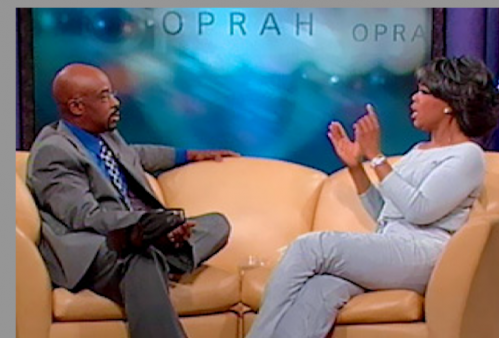To be fair, the mid-2000s hullabaloo about Black men who were having secret gay sex “on the down low, or “on the DL,” was set off by an August 2003 feature in The New York Times Magazine written by Benoit Denizet-Lewis, an openly gay white man. The term had been coined in the mid-’90s and made popular by recording artists TLC and R. Kelly. For his article, Denizet-Lewis talked to Black men throughout the United States who didn’t identify as gay but nonetheless were having plenty of sex, often condomless, with other men—and, in some cases, were also having condomless sex with their wives or girlfriends and transmitting HIV. The story pointed out that the number of Black women being diagnosed with HIV—at the time, 72% of all newly diagnosed women in the United States—was rising perilously and that the majority of the women were getting HIV from Black men, many of whom got it not from injection drug use but from sex with other men. (It is extremely difficult for women to pass HIV sexually to men, even with untreated HIV.)

But the down-low controversy exploded the following April, when Oprah Winfrey hosted J.L. King, a Black man who was on the brink of publishing On the Down Low: A Journey Into the Lives of “Straight” Black Men Who Sleep With Men, on her wildly popular talk show. The book would become a massive bestseller, particularly among Black women. As Winfrey showed empathy but also a certain skepticism that King was anything but plain old gay, King confessed his own history of DL sex with men while living with a wife he said he loved deeply and considered a best friend. (Neither had contracted HIV, he said.) He also said that his behavior was far from unique—countless Black men were living such DL lives and often not using condoms with either their male or female sex partners. He was appearing on the show and publishing the book, he said, to warn Black women that they might not know their men as well as they thought and that they should be aware they were at risk of contracting HIV.
“If I was a gay man, I may want to have a relationship with another man and play house, but when you’re on the DL, all you want is to have sex,” he told Winfrey. “I don’t wanna get caught up in a whole gay culture because people look at gay people as being less than a man—this sissy, this faggot…the greatest taboo is to be Black and homosexual.”
“I think you’re doing a great service to African-American women,” Winfrey told him. But she also flat-out asked whether King and other DL men’s belief that they could have sex with men without being gay—or at least bisexual—was a form of denial. As the audience laughed at her raised-eyebrow tone, King admitted that she was right.
King’s appearance and subsequent bestseller unleashed a furious public conversation. Although the debate was productive in that it got the public talking about both HIV risk and the shame and secrecy suffered by closeted gay men, it also to some extent demonized so-called DL Black men as callous transmitters of a virus that, at the time, many people didn’t know had been highly treatable since the mid-’90s . (A study five years later found that men who identified as DL had the same level of condomless sex with both men and women as bisexually active men who eschewed the DL term. “Future HIV prevention programs and research,” the study concluded, “should target sexual risk behaviors of Black men irrespective of identity, and not focus on the ‘down low.’”)
POZ tackled the issue in a September 2004 cover feature by Tomika L. Anderson titled “The Demons Behind the Down Low.” Anderson talked to Black women who acquired HIV from their husbands or boyfriends, Black HIV experts and outreach workers, and DL men themselves and explored how Black society’s hostility toward such men was driven by high levels of homophobia. But her article also probed how high levels of poverty, incarceration, institutional racism and an overall sense of socioeconomic fragility had put an unrealistically high premium on the notion of Black masculinity, which left little room for Black men to be openly gay and bisexual.
At the story’s end, the straight Black HIV counselor Tony Wafford asked: “When we look at people with HIV, why do we need to worry about ‘Was she or he a ho, a faggot or whatever?’ Maybe they’re just a hurt human being who needs you to help them.”

In 2010, King returned to Winfrey’s show and, with his ex-wife by his side, shared, “I have accepted the fact that I am a Black, gay, proud man.” His announcement was met with applause. In the 20 years since the DL furor, vast swaths of the Black community, especially younger generations, have come out as gay, lesbian, bisexual, transgender, nonbinary or otherwise queer. Queer Black people’s cruel dilemma of having to choose between homophobia in the Black world versus racism in the white world has broken down somewhat, largely due to changing attitudes among Black people with regard to homosexuality. In 2019, 57% of Black adults—just shy of 61% among white adults—said same-sex marriage was good for society. Also, even though Black women still make up the lion’s share of new HIV infections among U.S. women, new infections among them have decreased 43% between 2008 and 2018—a drop attributable at least in part to heightened awareness of risk, which began with Winfrey’s DL moment, even if it evoked recrimination as much as enlightenment.
In March, at the 35th annual GLAAD Media Awards, Winfrey received the Vanguard Award for her longtime efforts in promoting equal rights for LGBTQ people. During her acceptance speech, Winfrey shared that her older brother, who was gay, had died 35 years ago of an AIDS-related illness.







Comments
Comments